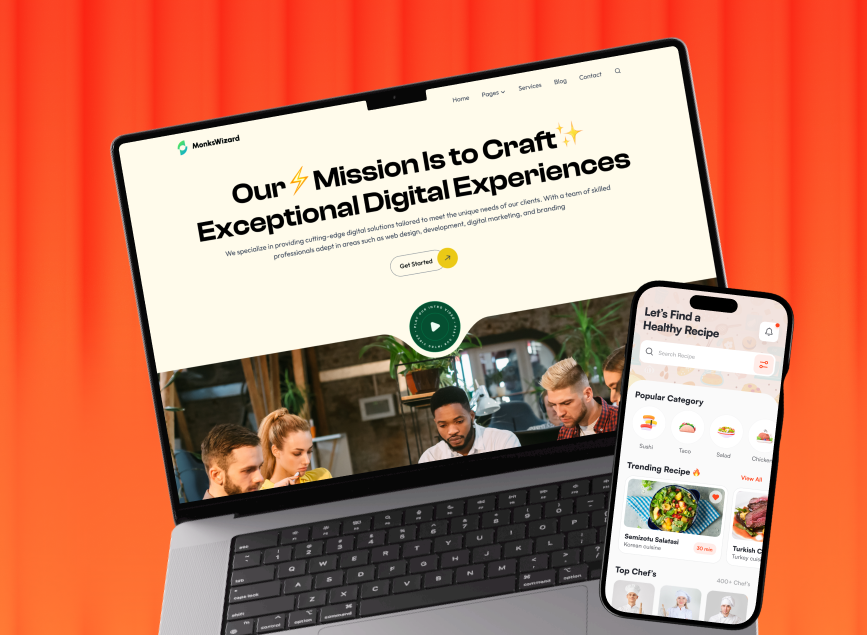
Key Takeaways
If you keep guessing your users’ moves, you should stop right now. Instead, use journey mapping to get the necessary insights you need to improve your product’s user experience. Many novices neglect the user journey map; their result is all frustrated users and missed opportunities.
A customer journey map is a powerful strategy that helps you see your product or service through your users’ eyes. It visually represents the steps users take while using your product. As a result, you can easily understand the user’s pain points and ponies that run before your eyes.
Today, my topic is all about user journey mapping. So, keep your eyes open to learn how to try it, why you should try it, and how it will bring you the best outcome.
What Is User Journey Mapping?
User journey mapping is a process that helps you grasp how users interact with your product or service. It’s like creating a visual map of their experience. This map shows each step a user takes from the beginning to the end.
If you do this properly, you can see what users need, want, and feel at each stage. It can help you mark pain points and opportunities for improvement. According to the Neilsen Norman Group:
A journey map is a visualization of the process that a person goes through in order to accomplish a goal.
For example, imagine you are mapping the journey of a customer using an online food delivery app. The journey might start with the user searching for a restaurant. Then he might browse the menu and place an order. After that, he would wait for delivery, and finally receive the food.
Here, you can see where users may face challenges, like a confusing menu or slow delivery times. So, user journey mapping will pinpoint ways to improve their experience.
Components of User Journey Mapping
User journey mapping comes with several key components. These can help you create a clear picture of the user’s experience. Here are some of the main components to consider:

User Persona
It is a fictional character that represents your target user. A user persona includes details like age, occupation, goals, and challenges. You have to realize who your users are. Then you can anticipate their needs and design experiences properly.
Scenario with Expectations
A scenario outlines a specific situation or context where the user interacts with your product. It describes what the user expects to achieve and the outcome they hope for.
Think of a scenario where a user might want to book a hotel room online. His expectation could be to find a room easily and complete the booking promptly.
Journey Phases
These are the different stages a user goes through during their interaction with your product. Some of the common phases include awareness, consideration, decision-making, and post-purchase.
Each of these phases can help you grasp the user’s mindset. After that, you can provide the appropriate support they might need.
Actions, Mindsets, and Emotions
These tools break down what users do, think, and feel at each stage of their journey. Actions are the steps they take, mindsets are their thoughts, and emotions capture how they feel.
This data can help you empathize with users. Also, it will help you create more user-friendly experiences.
Opportunities for Improvement
If you can analyze each stage of the journey, you can locate areas where the user experience can be elevated. These opportunities might include simplifying processes, offering better support, etc.
If you can improvise the marked scopes properly, you will be able to provide a better user experience.
Rules of Creating A User Journey Map
There is no established set of rules to follow while creating a customer journey map. It’s because there are different types of projects and their needs can be different.

However, here are some essential factors that are usually considered as the rules of creating a customer journey map:
- Keep the User at the Center: Always focus on the user’s perspective. Your journey map should reflect their experiences, emotions, and needs, not your company’s internal processes.
- Use Real Data: Base your journey map on actual user research and data. Try to avoid assumptions. Use surveys, interviews, and analytics to inform your map.
- Define Clear Objectives: Set specific goals for your journey mapping process. You must discover your goals and what questions you’re trying to answer.
- Include Multiple Touchpoints: Consider all interactions across various channels. Don’t limit your map to just one aspect of the user experience.
- Show the Emotional Journey: Include the user’s thoughts and feelings at each stage. This emotional insight is crucial for understanding the full user experience.
- Collaborate Across Departments: Try to stay aligned with all your team members so that you can ensure a comprehensive view and get feedback from them.
Stages of User Journey Mapping
Creating a customer journey map is not so simple. There are different stages you need to go through. Let’s check out the core stages you can’t avoid while creating a user journey map:

Research and Data Collection
You need to start by gathering information about our users. Here, prioritize information that you get from surveys, interviews, and analytics data. Then, look at both numbers and personal stories to understand user behavior and preferences.
Define User Personas
The next stage is about creating fictional characters that represent your common users. These personas must have specific goals, behaviors, and traits. They help you design according to the real user needs.
Create Scenarios and Define Goals
After that, you have to imagine realistic situations where your personas use the product or service. Try to outline what each persona wants to achieve. Also, focus on spotting specific user needs, pain points, and motivations.
Identify Touchpoints and Stages
We list all the points where users interact with our brand. This could be websites, apps, customer service, or physical stores. We organize these touchpoints into stages of the user journey.
Map Actions, Thoughts, and Emotions
For each stage, try to describe what the user does, thinks, and feels. This approach gives you the necessary insight into the user’s experience at every step. Make sure to note both positive and negative aspects.
Identify Pain Points and Opportunities
Next, you should look for areas where users struggle or feel frustrated. Remember, these are the pain points you need to resolve. Also, spot chances to exceed user expectations. These facts are your opportunities for improvement.
Create the User Journey Map
In this stage, you have to make a visual representation of the entire user journey. It shows the stages, touchpoints, actions, thoughts, and emotions. This map helps you see the big picture of the user experience.
Analyze and Improve
Lastly, you should study the journey map to find patterns and insights. Try to brainstorm solutions for pain points and ways to enhance positive experiences. This approach will result in actionable steps for improving the user journey.
Following these stages, you can create better products and services. Remember that it’s an ongoing effort to understand and improve the user experience. Make sure not to ignore any stages I have mentioned here. Also, you need to follow the best practices for user journey mapping for the best outcome.
User Journey Vs User Flow
User Journey and User Flow are two important concepts in user experience design. They help designers and product teams understand how users interact with a product or service.
Generally, a User Journey map explains the entire experience a user has with a product or brand. It covers all touchpoints, from first awareness to long-term loyalty.
This journey often focuses on multiple channels and takes place over an extended period. It also prioritizes the user’s emotions, motivations, and pain points throughout their experience.
On the contrary, user Flow is more specific. It outlines the steps a user takes to complete a particular task. It could be making a purchase, signing up for a service, or finding information.
User Flow is usually represented as a diagram that shows the path users take through different screens or pages. However, here’s a table that will help you differentiate these two facts in a better way:

Necessity of Customer Journey Map
The necessity of a Customer Journey Map cannot be overstated in today’s competitive business landscape. Here’s why it’s crucial:
Enhances Customer Understanding
A Customer Journey Map provides deep insights into customer behavior, needs, and pain points. It helps you observe your product or service through the customer’s eyes. This understanding is essential for creating experiences that will resonate with users.
Identifies Pain Points and Opportunities
By mapping out each stage of the customer journey, you can easily spot where customers struggle. These pain points are pretty good opportunities for improvement. The map also helps you find areas where you can do more to delight customers.
Aligns Teams and Departments
This mapping approach also serves as a common reference point for all departments. It lets you break down silos by showing how each team’s actions impact the overall customer experience. This alignment can later result in more cohesive strategies and better outcomes.
Guides Resource Allocation
Understanding the customer journey encourages you to prioritize your efforts and resources. It makes you focus on the most critical touchpoints and stages. This targeted approach often results in more efficient use of time and money.
Improves Customer Retention
Journey maps also spot pain points and enhance positive experiences. This way, it helps you improve customer satisfaction. Satisfied customers are more likely to remain loyal and make repeat purchases. So, you can cost-effectively have better retention while getting more new customers.

As we see, Customer Journey Maps are not just useful – they’re necessary for any business that wants to stand out in a customer-driven marketplace. They provide all the necessary insights to deliver experiences that turn customers into loyal advocates.

FAQs
What are touchpoints in user journey mapping?
Touchpoints are the core interactions between users and your product. These interactions are like website visits, app usage, customer service calls, and email communications. You need to spot these touchpoints to grasp how users engage with your brand throughout their journey.
How do you identify pain points in a user journey map?
To spot pain points, analyze each stage of the user journey and collect user feedback. Look for areas where users struggle or feel frustrated. Common pain points include confusing navigation, long wait times, and unclear instructions. These issues often result in user dissatisfaction or abandonment.
How often should you update a user journey map?
User journey maps need regular updates to stay relevant. Update your map when you notice changes in user behavior, introduce new product features, or see shifts in market conditions.
Also, try to use feedback from users and analytics data to guide these updates. Regular revisions ensure your map accurately reflects the current user experience and help you make informed decisions to improve it.
End Note
User journey mapping has no alternative to understanding and improving the user experience. It lets you visualize the steps a user takes when using your product or service. That is the most effective way to identify user pain points. It also helps you understand user needs and spot opportunities for improvement.
A successful user journey map provides a clear, actionable roadmap for enhancing user satisfaction and achieving business goals. So, make sure to regularly update the map with real data and feedback.

.svg)






.png)
.png)
.png)
.png)


.png)
.png)
.png)
.png)



.avif)



